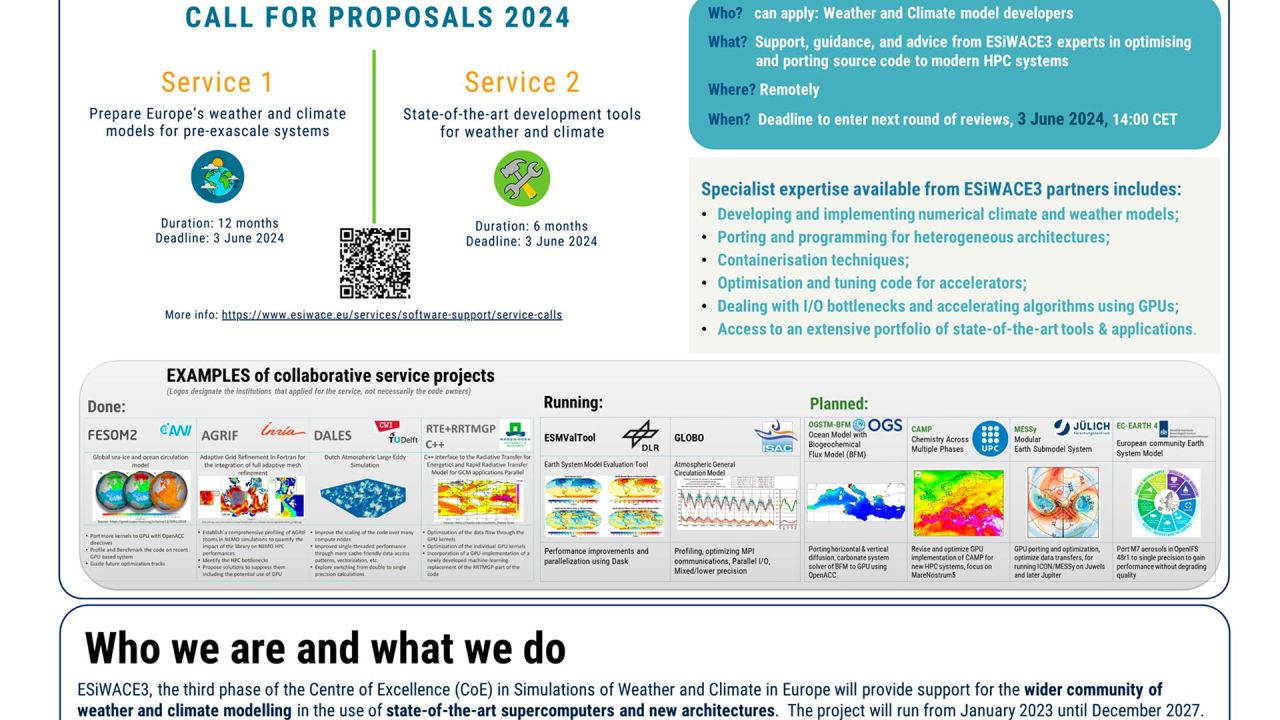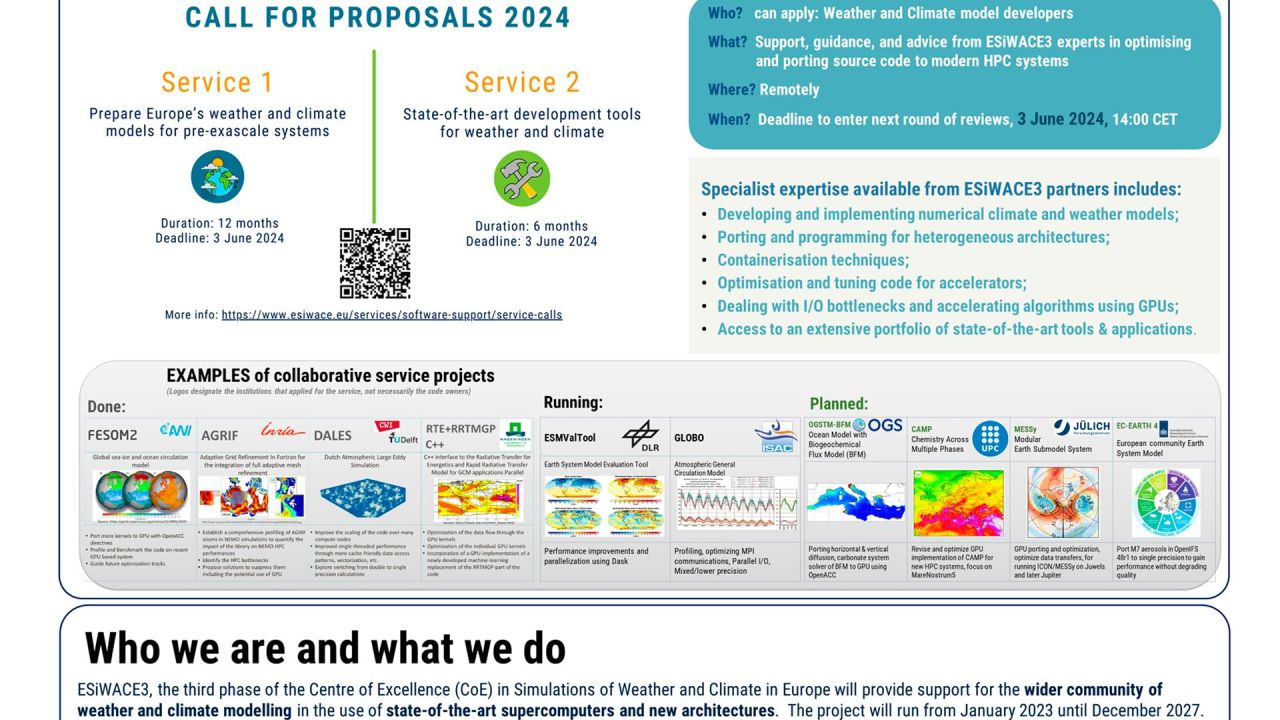

ESiWACE — Towards Exascale Weather and Climate Simulations
Monday, May 13, 2024 3:00 PM to Wednesday, May 15, 2024 4:00 PM · 2 days 1 hr. (Europe/Berlin)
Foyer D-G - 2nd floor
Project Poster
Earth, Climate and Weather Modeling
Information
Poster is on display.
ESiWACE3 focuses on three main goals that are essential to prepare existing operational weather and climate prediction systems for the exascale era: 1. The transfer and establishment of knowledge and technology for efficient and scalable simulations of weather and climate across the Earth System modelling community in Europe; 2. Closing common technology gaps in the knowledge and toolbox for high-resolution Earth System modelling via joint developments across the European community; 3. Serving as a sustainable community hub for training, communication, and dissemination of high-performance computing for weather and climate modelling in Europe. ESiWACE3 will bring the various approaches to address these challenges from the different modelling groups together to transfer knowledge across the weather and climate domain, generate synergies between the local efforts, provide targeted support to modelling groups via customised high-performance computing services, and provide training to educate the next generation of researchers.
Contributors:
ESiWACE3 focuses on three main goals that are essential to prepare existing operational weather and climate prediction systems for the exascale era: 1. The transfer and establishment of knowledge and technology for efficient and scalable simulations of weather and climate across the Earth System modelling community in Europe; 2. Closing common technology gaps in the knowledge and toolbox for high-resolution Earth System modelling via joint developments across the European community; 3. Serving as a sustainable community hub for training, communication, and dissemination of high-performance computing for weather and climate modelling in Europe. ESiWACE3 will bring the various approaches to address these challenges from the different modelling groups together to transfer knowledge across the weather and climate domain, generate synergies between the local efforts, provide targeted support to modelling groups via customised high-performance computing services, and provide training to educate the next generation of researchers.
Contributors:
Format
On-site
